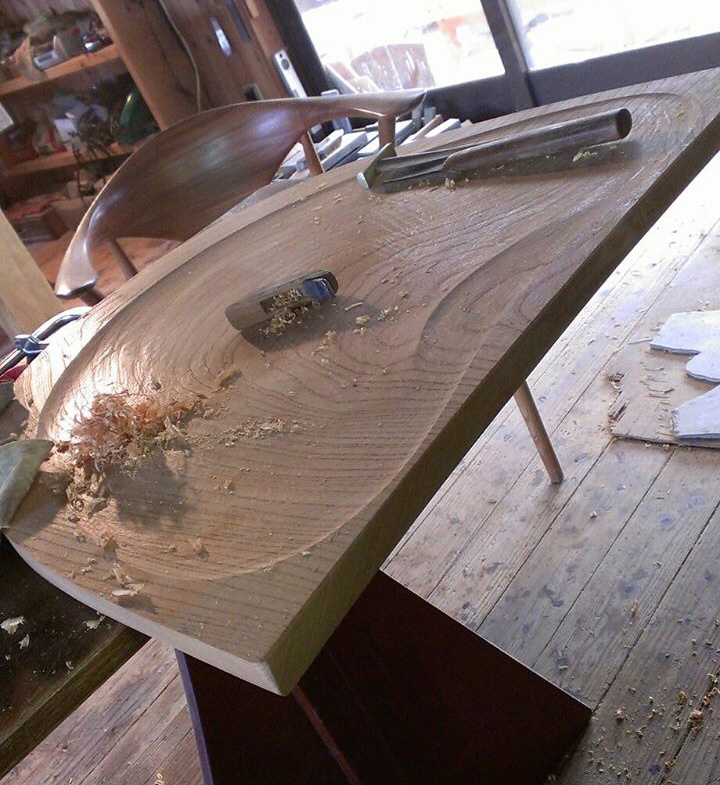
Kanna is a tool that has over one hundred years of history. This Japanese tool is minimally designed and used without any unnecessary waste. Nowadays, kanna has become a popular tool in wood-crafting that results in beautiful surfaces.
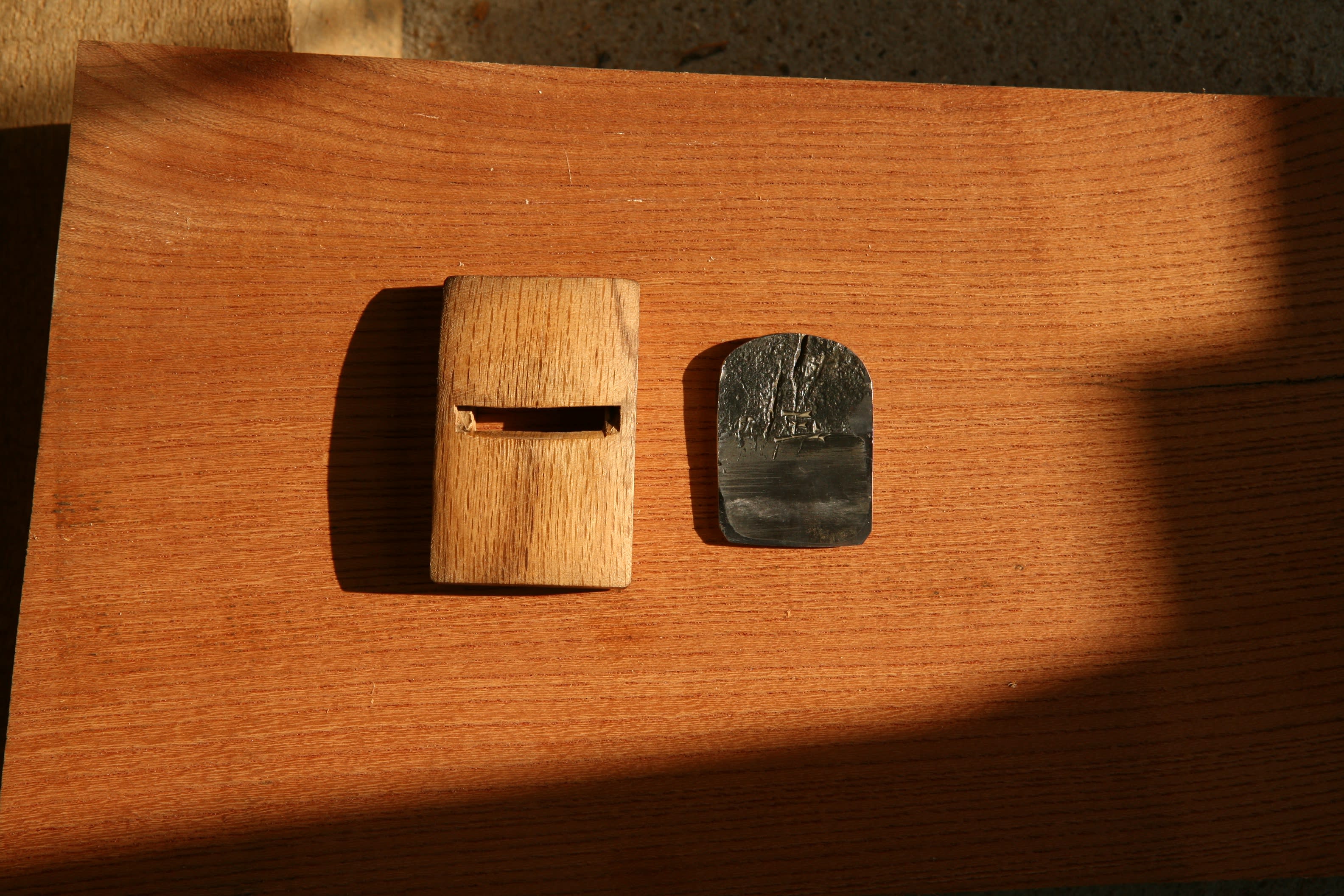
Toshio Tokunaga makes his kanna tools with typically zelkova wood since it is considered one of the strongest woods. The blade is known to be as strong as samurai swords. This allows for the shaving to be ultra-smooth and precise.

The general shape of the dai is an oblong block. Each artist will make numerous blocks that have a variety of handles depending on how they want to shape and curve the wood. A small hammer is used to settle the kanna in and out of place.
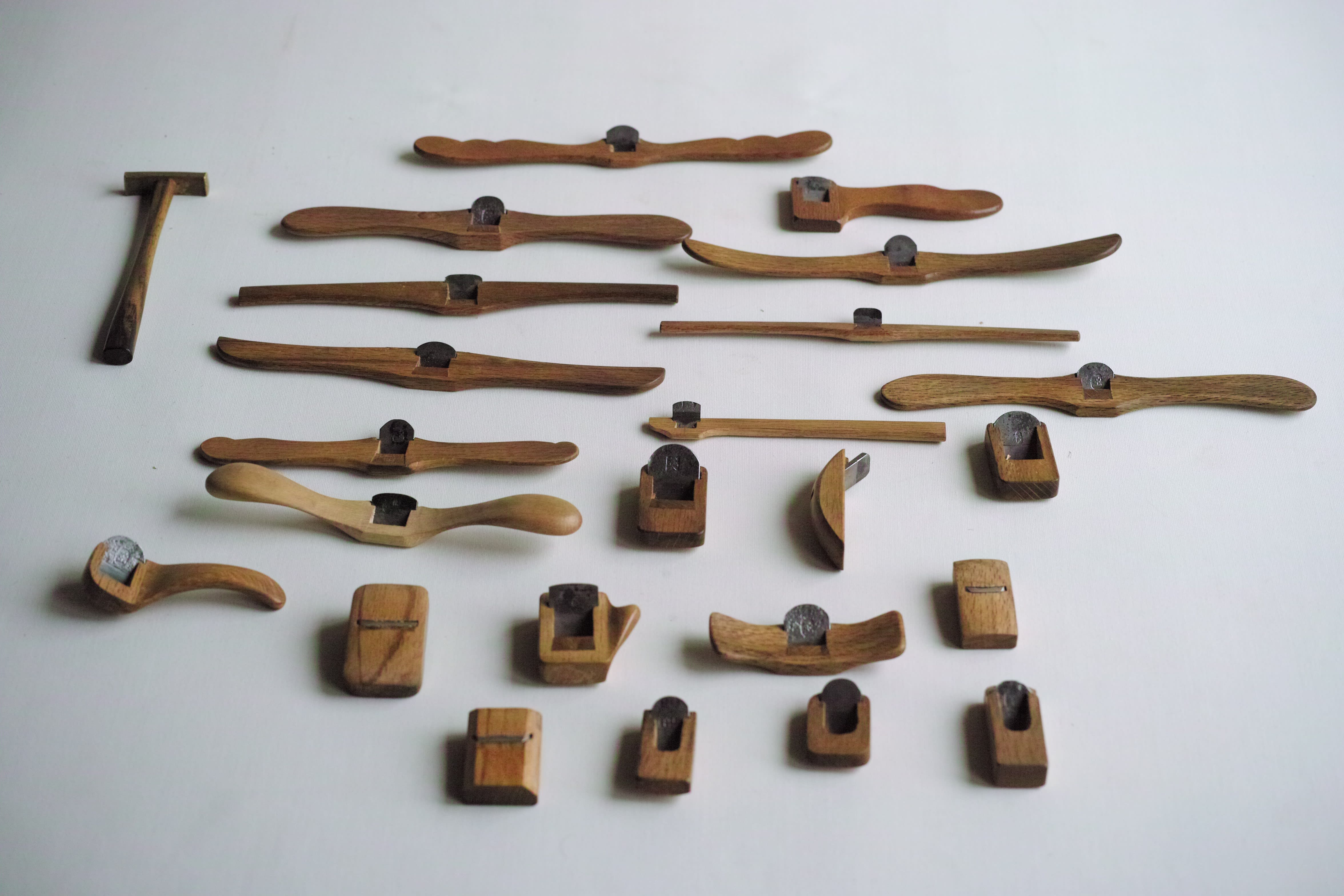
Japanese artisans pull the kanna towards them as Western furniture designers push kanna away from them. The body, breath, and kanna move together, allowing minimal use of effort. When looking at the plane in service, the orientation is that the trailing end is 'the head' end.The shikomi-mizo, blade groove is tapered in two directions, narrowing as it goes deeper into the body, allowing the blade to fit snuggly into the wooden block.
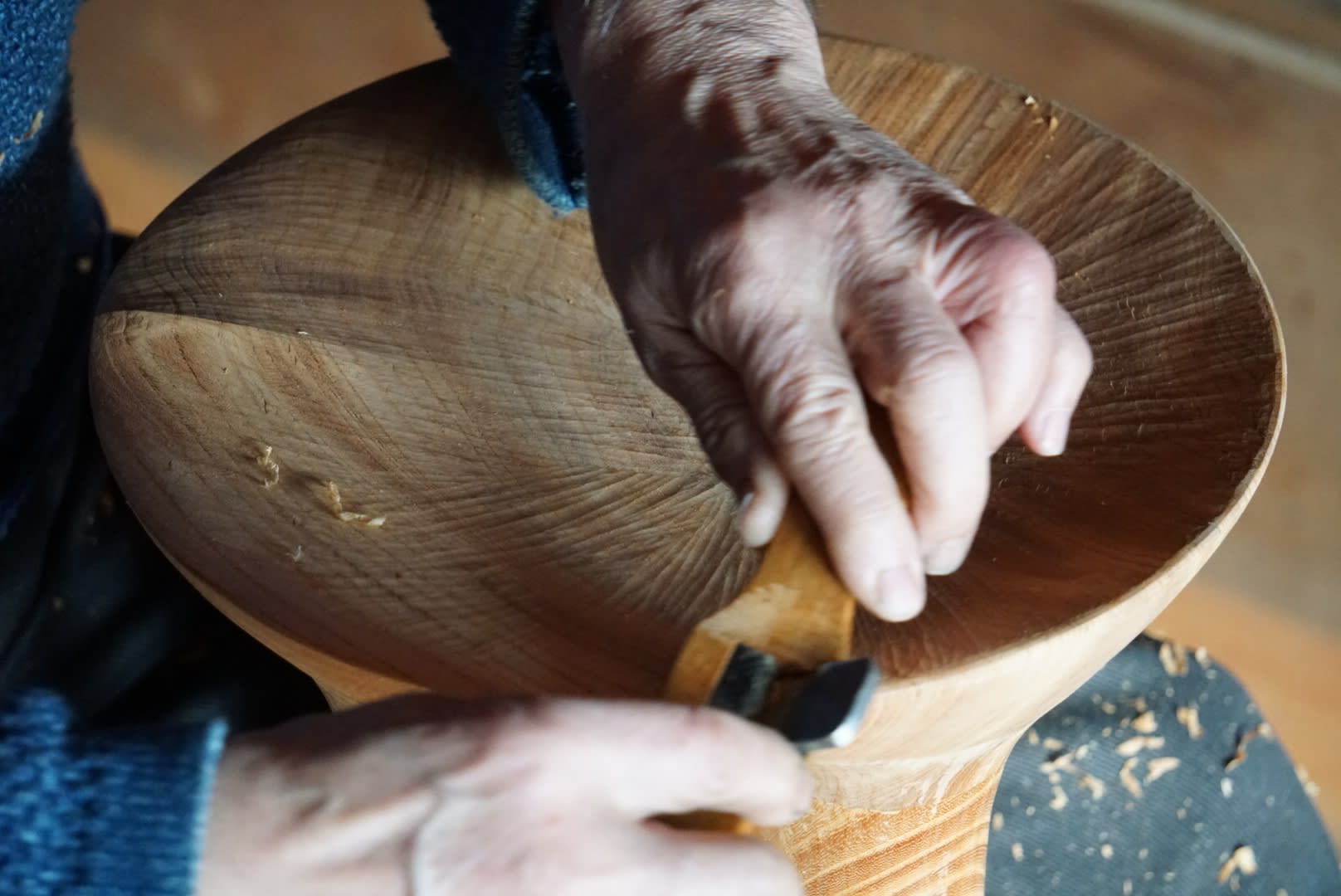
While sandpaper might be a simpler and more convenient tool to get instant satisfaction, it rubs away the natural pattern of the wood in the long term. In contrast, kanna cuts away successive layers that preserve the wood's natural appearance. For quick results, sandpaper scrapes away the dead particles of the wood and leaves the surface brilliant. Over time though, the wood will decay, and the overall appearance will fade. The use of kanna is the complete opposite, and the wood will age beautifully over time. Take a look at the difference between sandpaper and kanna under a microscope. Can you tell the difference?
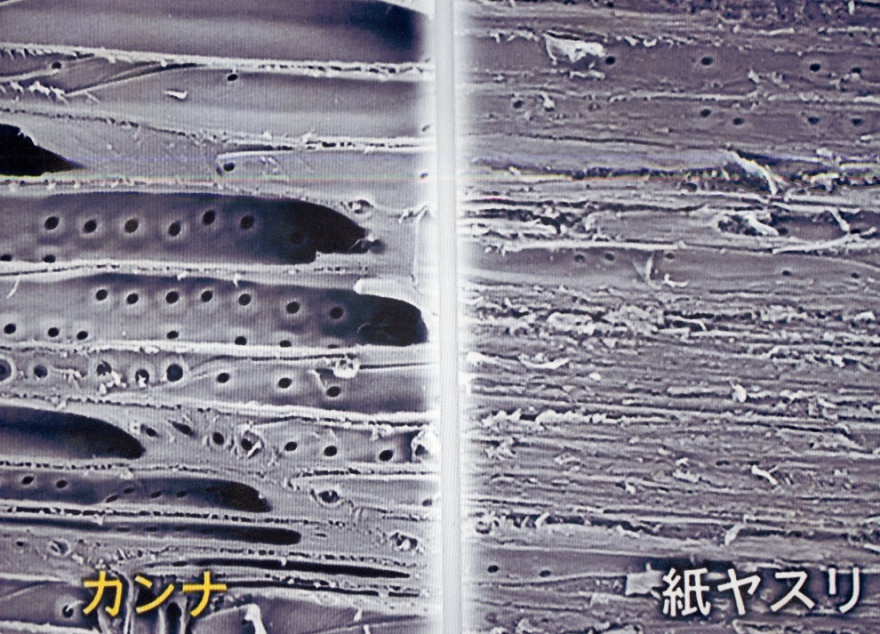
When planning, the blade cuts the wood just below the exposed surface, removing a small layer of wood that exits the plane as a thin shaving. When the wood is straight-grained and planned correctly, there is no trouble leaving a smooth, glossy surface on the wood. This exceptional tool allows for a staggering range of shapes and reflective contour surfaces that make for the most comfortable chairs.
